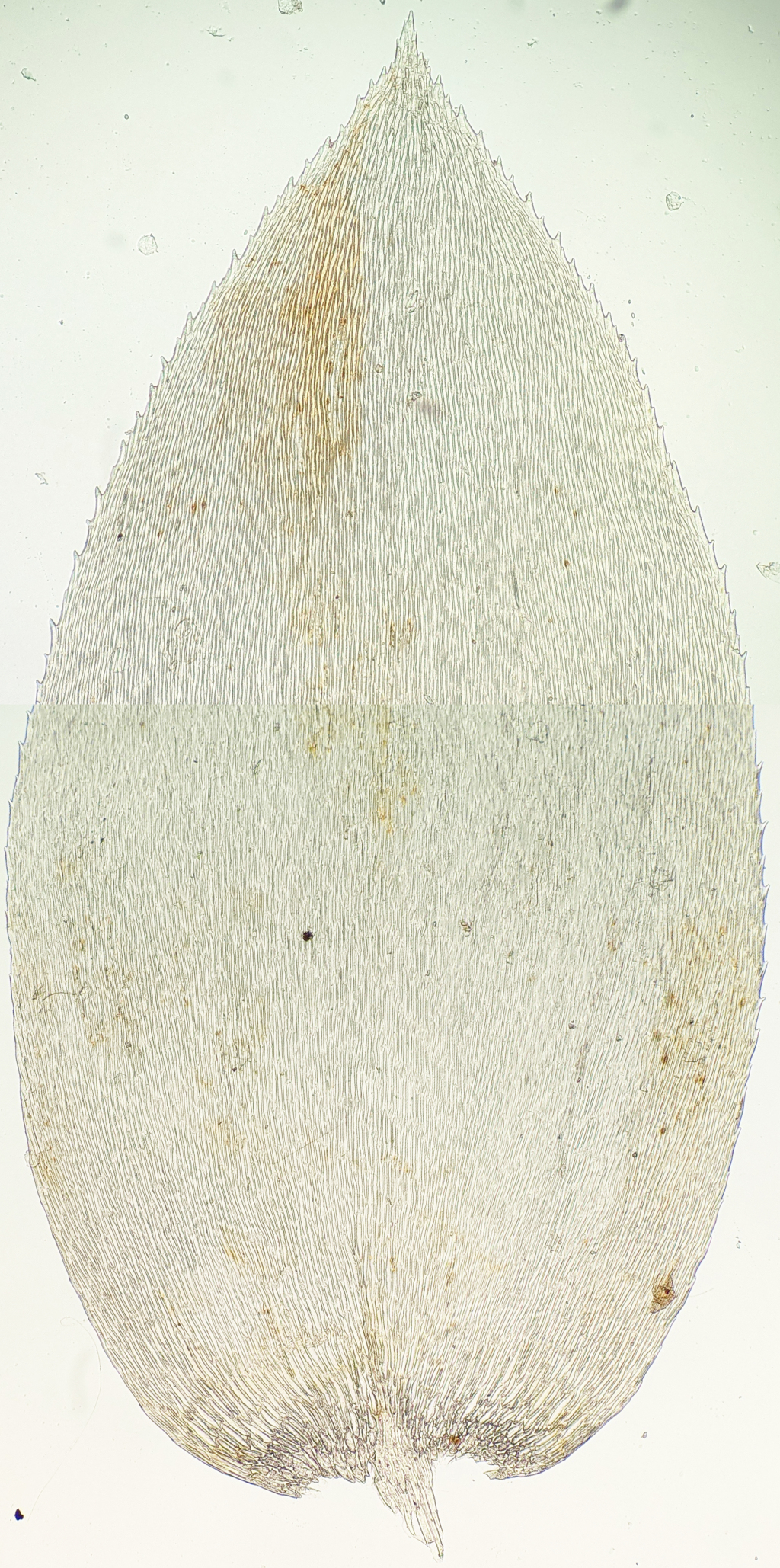Trachyloma planifolium
(Hedw.) Brid.Loose tufts or scattered on tree trunks, rarely on logs. Secondary stems 3–10 cm long, black, branches to 2.8 cm long, with terminal filamentous gemmae, (215–) 385–590 (–795) μm long, intermingled among persistent and normal-sized leaves. Leaves complanate, rugose, sometimes plicate, ventral and dorsal leaves erect and appressed, lateral leaves spreading, those on stipe erecto-patent or slightly spreading, plane; costae mostly single, sometimes double, sometimes absent, rarely longer than ¼ leaf length; margins serrulate toward apices, entire near base, plane or incurved on one side at base of lateral leaves, without a border; cells near apices linear to rhombic, 25–53 (–69) μm long, (7–) 9–11.5 μm wide, smooth; midlaminal cells linear to narrowly rhombic, (55–) 67–108 (–166) μm long, 7–9 μm wide, smooth, wider and longer at base. Stem leaves ovate to ovate-lanceolate, 2.6–4.6 (–5.2) mm long, 1.6–2.9 mm wide; apices acute. Branch leaves ovate, 1.9–3.2 (–3.5) mm long, 0.9–2.2 mm wide; apices acute to acuminate; Setae 0.9–1.7 cm long, reddish. Capsules suberect, cylindric, sometimes curved, 3–4 mm long. Calyptrae smooth, glabrous. Operculum rostrate from conic base.
OtP, EGU, OtR, Strz, HFE, VAlp. New Zealand. Mostly recorded from cool-temperate rainforest and fern gullies among wet-sclerophyll forest in the Otways and Strzelecki Ranges, but also recorded from warm-temperate rainforest near Goongerah and Mount Drummer in East Gippsland. Also QLD, NSW and Tas.
The combination of the silver sheen of the fronds, stems being differentiated into stipe and frond sections, gemmae at branch apices and leaves that are complanate, with a weak costae allows this species to be easily distinguished from other species.
 Spinning
SpinningMiller, N.G.; Manuel M.G. (1982). Trachyloma (Bryophytina, Pterobryaceae): A taxonomic monograph. Journal of the Hattori Botanical Laboratory 51: 273–321.
